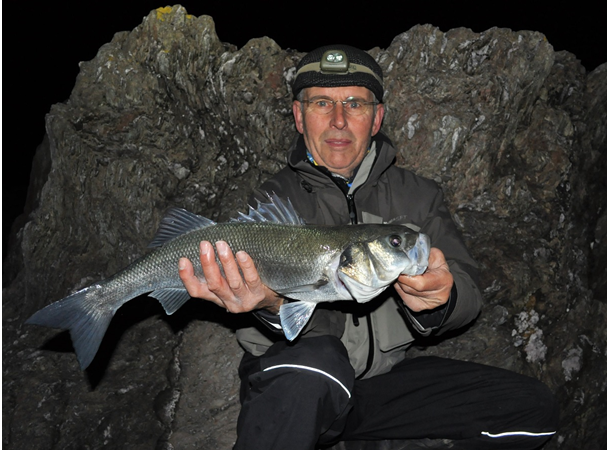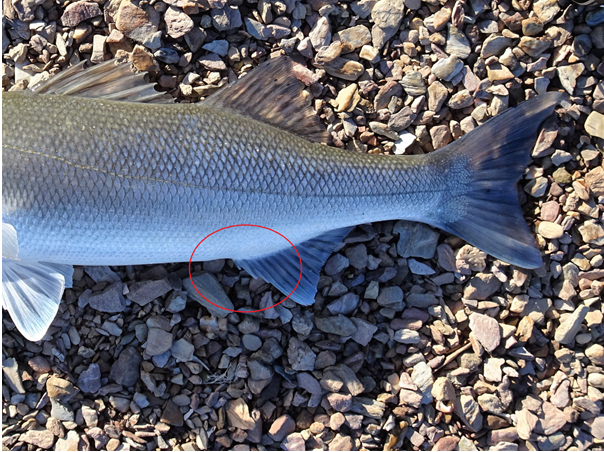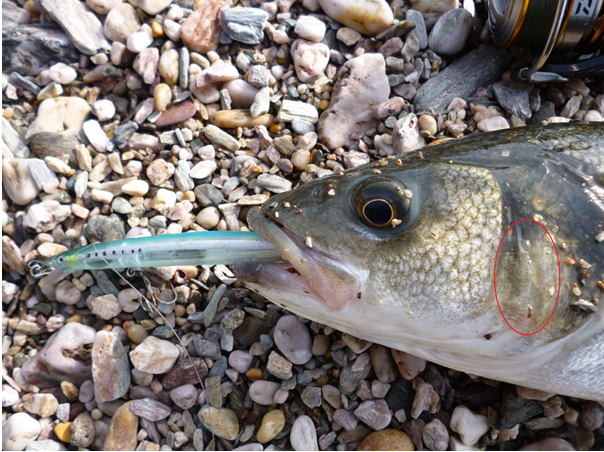How to ‘handle’ a bass
Posted by By Marc Cowling (South Devon Bass Guide) on 25th Mar 2019

So you’ve hooked into something that is seriously pulling back... A boil on the surface followed a flash of silver reveals the culprit to be a bass, and a good one too! Your heart is in your mouth, as you ‘guide’ (as best you can) a species that you have yearned to catch all winter following some studious exploration and research of your local reefs, coves and beaches.
Nearly, nearly...YES!!!! She’s yours, as an angry, in fact thoroughly aggravated mass of armour plated splendour bucks, thrashes and twists as it gulps for air and glimpses its captor - you. So in keeping with the theme of my most recent posts, aimed at the less experienced bass lure angler, just how do you go about holding and returning what is in my humble opinion the most beautiful sea fish in our waters?
Unhooking
The ideal scenario is that all of your bass are caught on a large single hook that is nestled in the side of the mouth, and that it remains still as you extract it... But if trebles and a rather upset spine wielding beast or ‘beastie’ in respect to the smaller ones (that can be more difficult and like holding onto than a bar of soap with thorns attached) things can become a little more complicated.
If at all possible (and I’m thinking safety from rocks in turbulent seas here) avoid lifting bass above 2lb in weight vertically so to cause stress on its spine, and more obviously, its jaw area. Again, if it’s safe to do so, unhook your prize either as close to or better still in the water’s edge, utilising forceps of the medium length variety as these will assist you greatly with deeply hooked fish. But the main thing to note is that if the fish has to be kept out of the water then lay it onto the most even, and least coarse platform possible, to alleviate any damage to its body.
Compared to a wrasse, and most certainly a pollack, mackerel or garfish bass are extremely hardy and robust, however, it goes without saying that any fish landed should be kept out of the water for the minimal amount of time.
Holding
There are three definite areas to avoid when it comes to holding a bass. Firstly and most evidently are those awesome spines (normally eight) encompassed within in its dorsal fin (see below).

Note the ‘evil’ spines on the dorsal fin of a modest-sized three pounder. More than enough to inflict some serious damage!
Secondly, and rather more understated, is a group of potentially hand piercing spines (normally three) positioned where the anal fin meets the belly of the fish (see below).

I’d say more of the ‘bass injuries’ or punctures that I’ve received (and I still do from time to time) have been caused by the spines on the anal fin of a bass.
Finally, and definitely the least obvious yet greatest area for concern is the razor-sharp ridge on a bass’s gill plate. It use to these to ‘slash’ at their prey - particularly when shoals of bait fish (sprat, sandeels, etc.) are accumulating.

Note the saw-edged pattern on the side of the gill plate (not on the outer edge of the gill itself). Many an angler has fallen foul of these and received a ‘slice’that remains sore for quite a few days. In case you’re wondering, the lure in its mouth is a Savage Gear Jerk Minnow 145.
With all of the above in mind, when it comes to the process of actually transporting a bass from dry land back to its rightful home (via a quick ‘grip and grin’ of course!) is to insert your thumb into its mouth and firmly grip the fish by holding its lower jaw whilst very gently pulling its head down ever so slightly. With the other hand, cradle the belly of the fish so that its entire body remains in an overall horizontal position - serving to both support its overall weight so that the spine isn’t placed under any undue stress, and importantly for you, your hands avoid all the hazardous areas!

A ‘grip and grin.’ If the fish is particularly bulky, like this 70cm (8.5lb) beauty that a client landed a couple of seasons back, then the tail can often droop down slightly. Essentially though, this is how they should be held.
Returning
Watching your hard earned quarry and one of these majestic sporting species swim away, relatively none the worse for the experience of being extracted from the sea, is very special indeed. Once again, don’t risk your life attempting to perform the ‘perfect release’ if the sea conditions aren’t conducive to doing so, but if you can find a sheltered gully or pool leading back to the sea when fishing from rocks then this is the way ahead. If no such problem exists, because you’re able to stand in the water and release the bass, then this is how I do it.
Lower the fish into the water as discussed - horizontally, gripping its lower jaw and supporting its weight with your hand under its belly. Upon feeling the water around its body most bass will attempt to ‘get away’ there and then via a vigorous shake of its head. The danger of releasing it at this point is that there is an increased chance that the fish may not have fully recovered. Instead, resist that natural reaction of both you and the bass and just hold it (with both hands still if required) with its head pointing in the direction (facing) either the direction of the current or the waves (or both preferably) so that the water is able to flush through its mouth and gills.
If the fish is extremely tired or taking a while to regain its strength, then a positive indicator that ‘all will end well’ is the fish moving its pectoral and pelvic fins (both of which are paired on either side of its body). Quite often, when you notice this movement, soon after you may feel the bass clench its mouth around your thumb (they don’t have any teeth so don’t worry!) and/or the fish will shake its head and body simultaneously - this is when to release it, and admire the it way glides away effortlessly and beautifully to breed, feed and return when it is a double hopefully!
Marc Cowling is a highly respected shore-based bass/lure angling guide who has recently released his first book ' The Lure of The Bass'.
